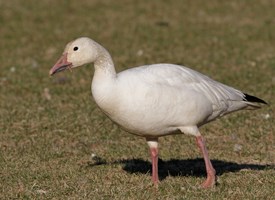So what exactly are invasive species?? There is a fairly strict definition of invasive species
as per the executive order signed by Bill Clinton in 1999 an "invasive species" is defined as a species that is:
1) non-native (or alien) to the ecosystem under consideration andInvasive species can be plants, animals, and other organisms (e.g., microbes). Human actions are the primary means of invasive species introductions.
2) whose introduction causes or is likely to cause economic or environmental harm or harm to human health.
Why do I care?? Well this to some extent depends on your personal interests, but we are all impacted by invasive species. If you are a conservation organization or a landowner who strives to create natural habitat on your property for your flora and fauna, then you are always fighting the battle of invasive species to create better habitat. At some point you have to choose your battles and realize that eradication is not something we are going to see in our lifetimes, but perhaps control is something that we can achieve individually. If you have no interest, or do not care about the "environmental" cost of invasive species, you may care about the economic cost.
 |
| Native May Apple |
There are many estimates about the economic cost of invasive species, putting the economic cost well into the $100 billion dollar range. This cost is reflective of loss of production of a native or depended upon species because of an invasive species as well as the cost of actually controlling the species. The big thing on the new most recently has been the Burmese pythons and the hunt in the Florida Everglades. These snakes are devastating to the fragile ecosystem of the everglades and are causing severe impacts on the area. There are fish and microorganisms in the Great Lakes area which have resulted in a loss of sport fishing jobs, and there is the most obvious loss of agriculture production.
If I have caught your interest. There are very simple steps that you can do to either help us get ahead of the problem, or at least to keep from contributing to the problem.
- Make sure that you are landscaping with plants that are NOT INVASIVE. In Southeastern PA, landscapers love to use Euonymus alatus (Burning Bush), Buddleia spp. (Butterfly Bush); and Acer platanoides (Norway Maple) in their plantings. Be an aware customer. Do not let them sell you an invasive plant! If you are not sure, educate yourself using resources.
- NEVER, NEVER, NEVER, "dispose" of an unwanted plant or pet by putting it back into what you believe is it's native habitat! Even GOLDFISH (shocking I know) are becoming invasive in parts of the country. Who would have thought those innocent little fish you win at the fair would be a problem.
- Educate your neighbors! As I mentioned before, use your resources. There are wonderful sites online for those of us who live in the U.S.: http://www.invasivespeciesinfo.gov/index.shtml#.USzx92cTW3k and I am sure, no matter where you are, there are similar resources available. Local conservation organizations are another great resource. The Land Conservancy for Southern Chester County holds many programs about plant and invasive identification, and we also are happy to come out to your property to assist you with where to begin.
Just remember even if you live on a small property, you can make a difference by planting only non invasive (though I would recommend all native) plants!!
.jpg)

.jpg)




.JPG)
.jpg)








